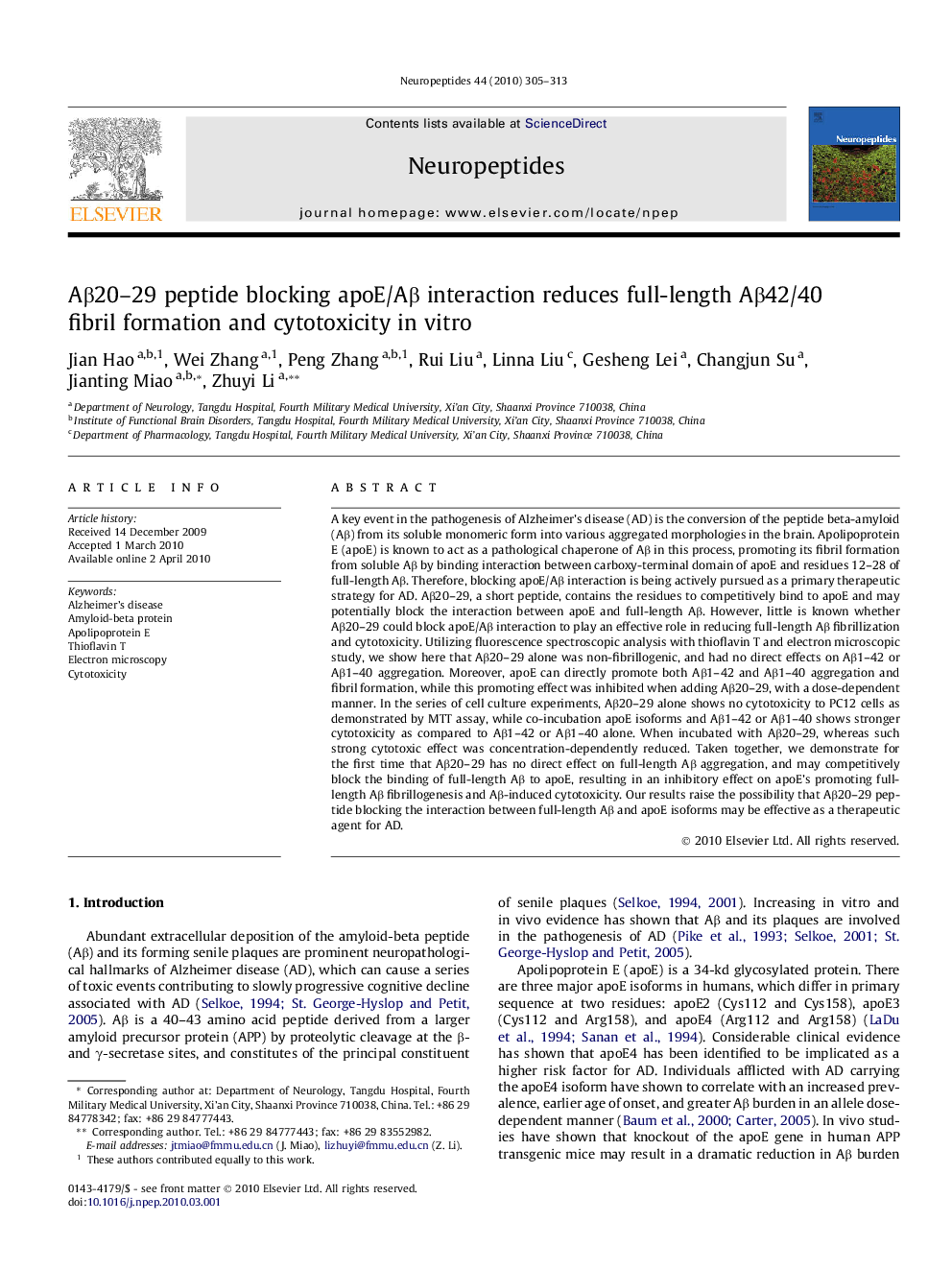| Article ID | Journal | Published Year | Pages | File Type |
|---|---|---|---|---|
| 2808287 | Neuropeptides | 2010 | 9 Pages |
A key event in the pathogenesis of Alzheimer’s disease (AD) is the conversion of the peptide beta-amyloid (Aβ) from its soluble monomeric form into various aggregated morphologies in the brain. Apolipoprotein E (apoE) is known to act as a pathological chaperone of Aβ in this process, promoting its fibril formation from soluble Aβ by binding interaction between carboxy-terminal domain of apoE and residues 12–28 of full-length Aβ. Therefore, blocking apoE/Aβ interaction is being actively pursued as a primary therapeutic strategy for AD. Aβ20–29, a short peptide, contains the residues to competitively bind to apoE and may potentially block the interaction between apoE and full-length Aβ. However, little is known whether Aβ20–29 could block apoE/Aβ interaction to play an effective role in reducing full-length Aβ fibrillization and cytotoxicity. Utilizing fluorescence spectroscopic analysis with thioflavin T and electron microscopic study, we show here that Aβ20–29 alone was non-fibrillogenic, and had no direct effects on Aβ1–42 or Aβ1–40 aggregation. Moreover, apoE can directly promote both Aβ1–42 and Aβ1–40 aggregation and fibril formation, while this promoting effect was inhibited when adding Aβ20–29, with a dose-dependent manner. In the series of cell culture experiments, Aβ20–29 alone shows no cytotoxicity to PC12 cells as demonstrated by MTT assay, while co-incubation apoE isoforms and Aβ1–42 or Aβ1–40 shows stronger cytotoxicity as compared to Aβ1–42 or Aβ1–40 alone. When incubated with Aβ20–29, whereas such strong cytotoxic effect was concentration-dependently reduced. Taken together, we demonstrate for the first time that Aβ20–29 has no direct effect on full-length Aβ aggregation, and may competitively block the binding of full-length Aβ to apoE, resulting in an inhibitory effect on apoE’s promoting full-length Aβ fibrillogenesis and Aβ-induced cytotoxicity. Our results raise the possibility that Aβ20–29 peptide blocking the interaction between full-length Aβ and apoE isoforms may be effective as a therapeutic agent for AD.
